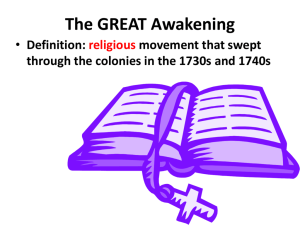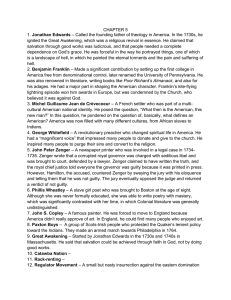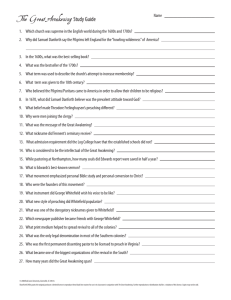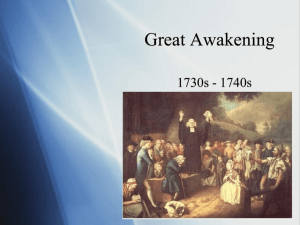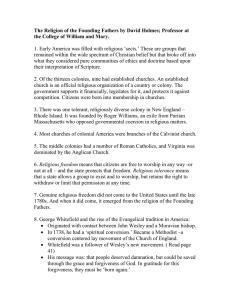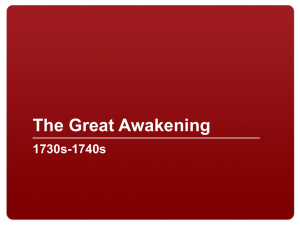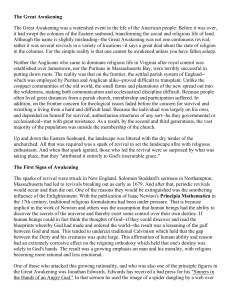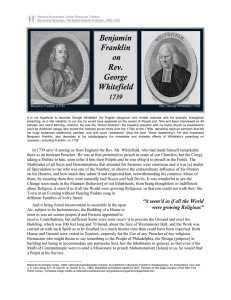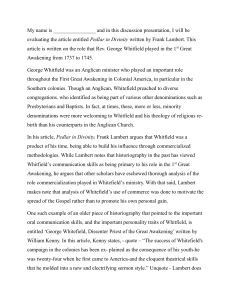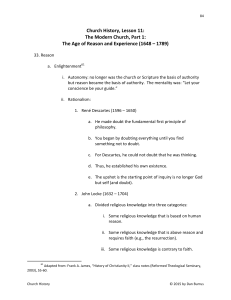The Great Awakening
advertisement
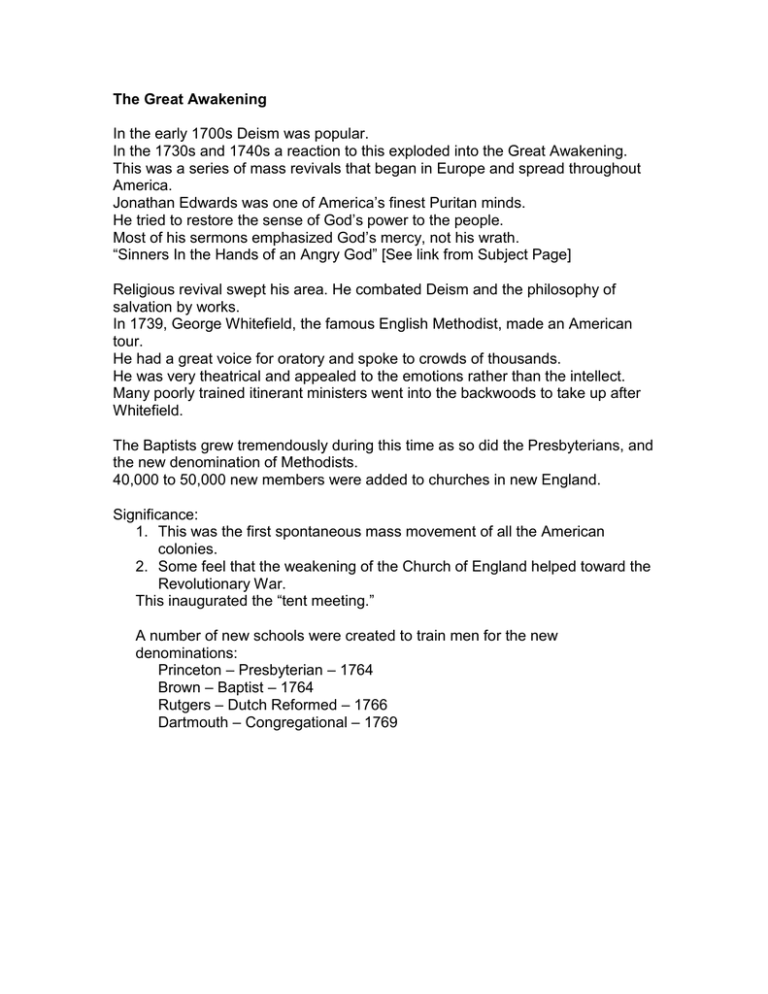
The Great Awakening In the early 1700s Deism was popular. In the 1730s and 1740s a reaction to this exploded into the Great Awakening. This was a series of mass revivals that began in Europe and spread throughout America. Jonathan Edwards was one of America’s finest Puritan minds. He tried to restore the sense of God’s power to the people. Most of his sermons emphasized God’s mercy, not his wrath. “Sinners In the Hands of an Angry God” [See link from Subject Page] Religious revival swept his area. He combated Deism and the philosophy of salvation by works. In 1739, George Whitefield, the famous English Methodist, made an American tour. He had a great voice for oratory and spoke to crowds of thousands. He was very theatrical and appealed to the emotions rather than the intellect. Many poorly trained itinerant ministers went into the backwoods to take up after Whitefield. The Baptists grew tremendously during this time as so did the Presbyterians, and the new denomination of Methodists. 40,000 to 50,000 new members were added to churches in new England. Significance: 1. This was the first spontaneous mass movement of all the American colonies. 2. Some feel that the weakening of the Church of England helped toward the Revolutionary War. This inaugurated the “tent meeting.” A number of new schools were created to train men for the new denominations: Princeton – Presbyterian – 1764 Brown – Baptist – 1764 Rutgers – Dutch Reformed – 1766 Dartmouth – Congregational – 1769
